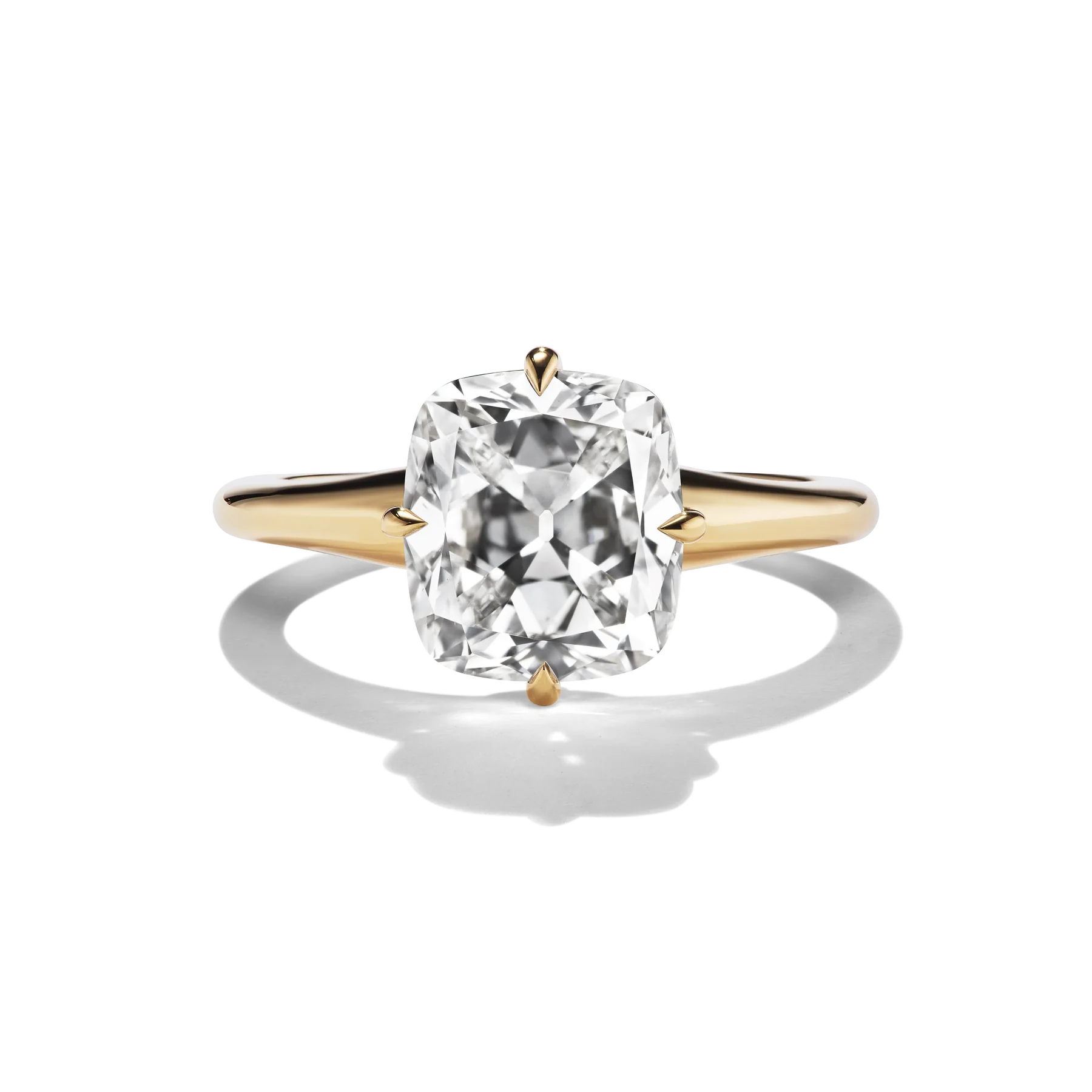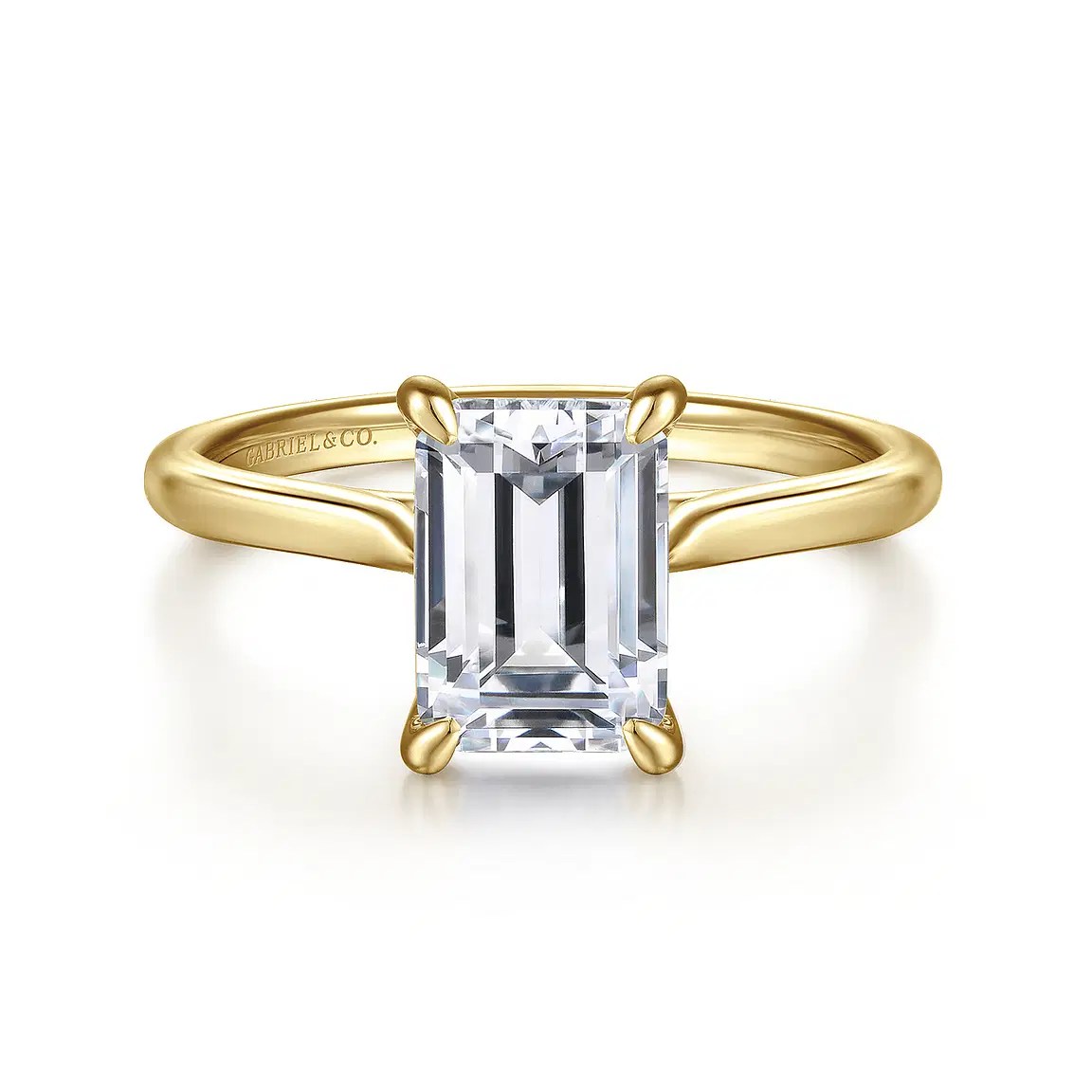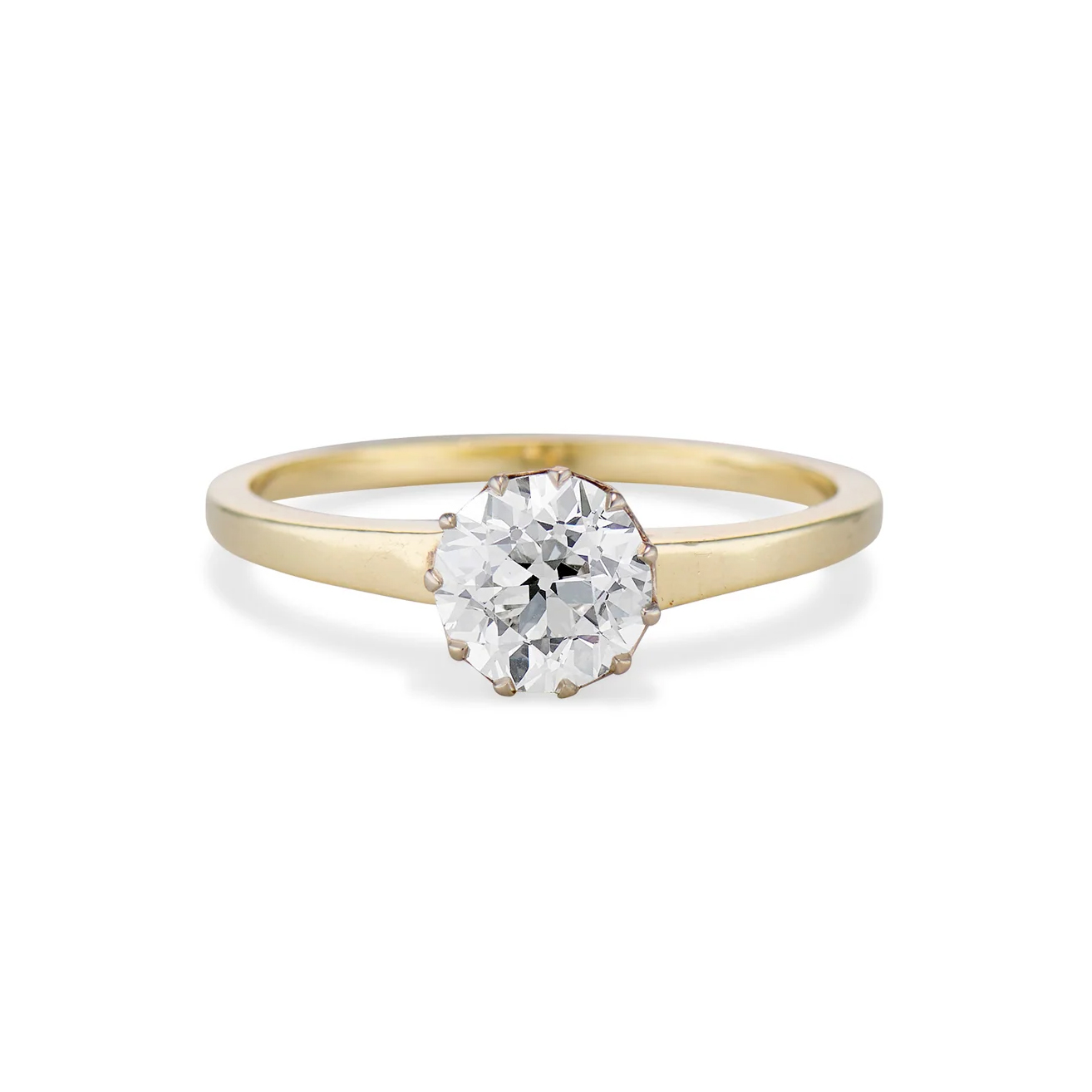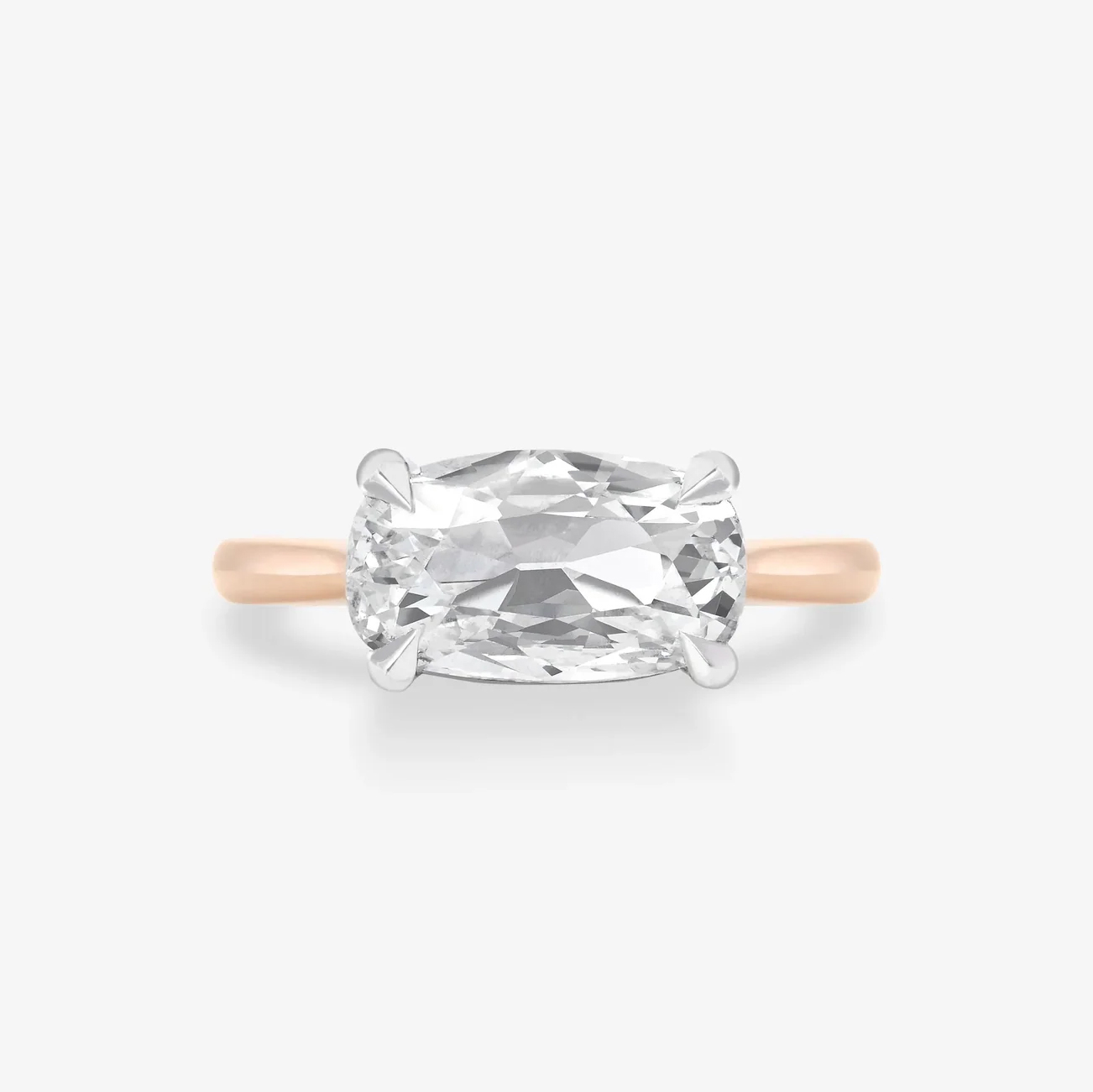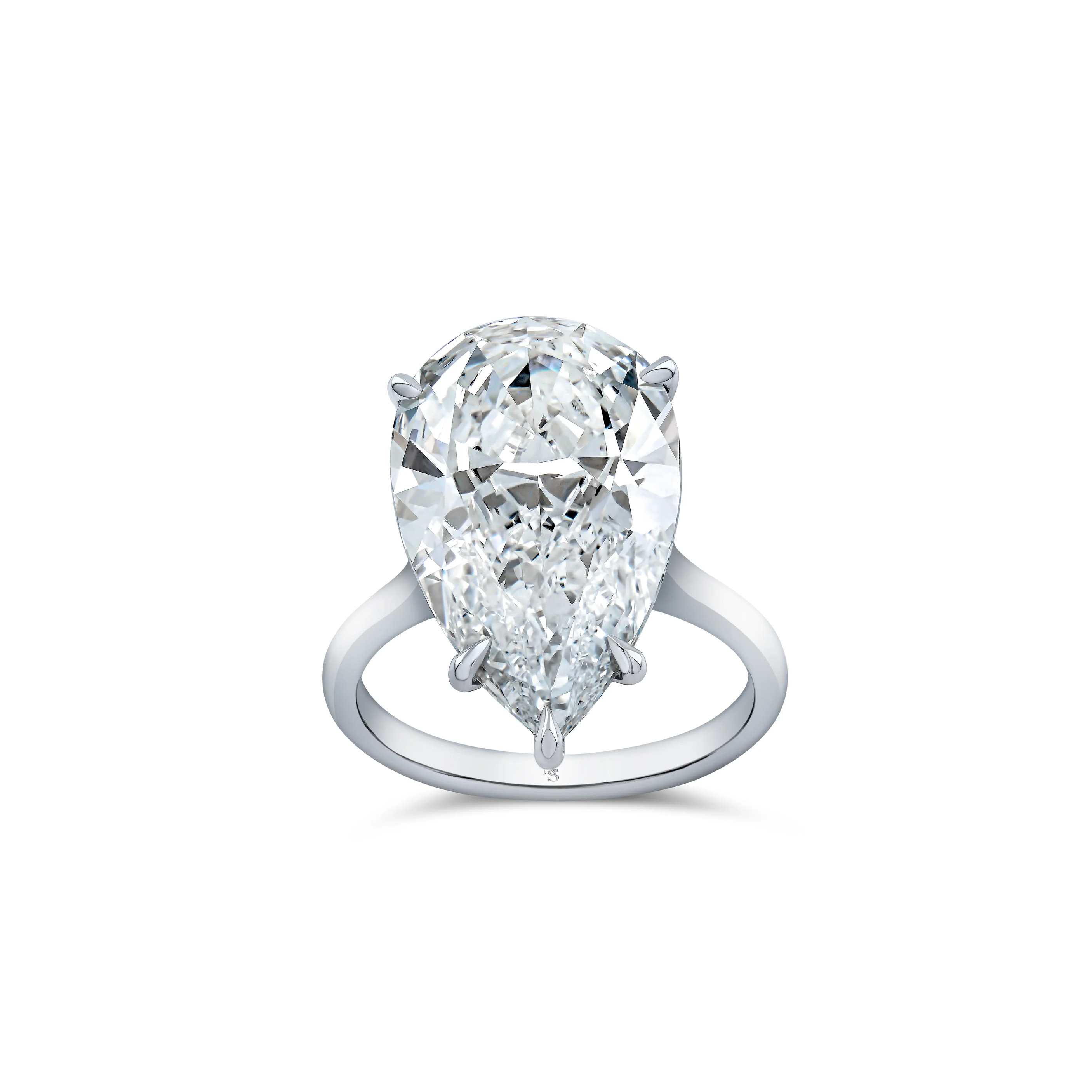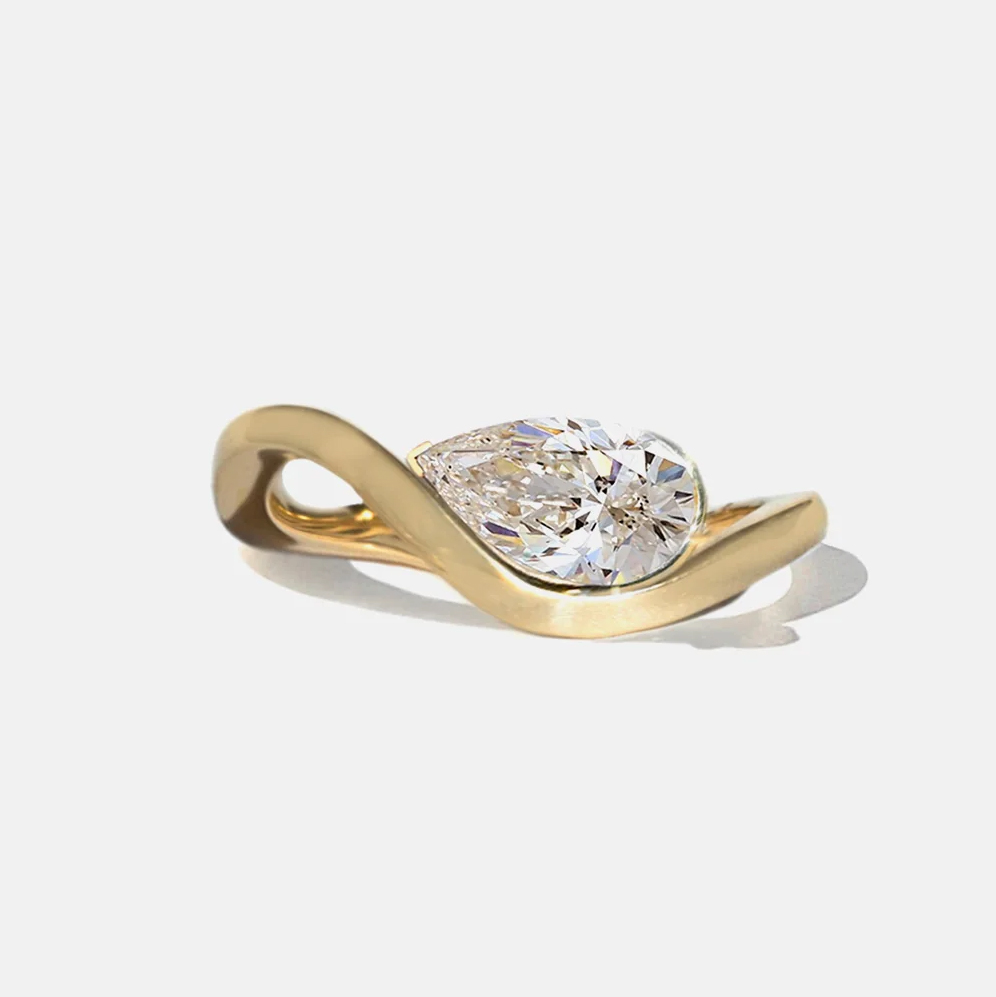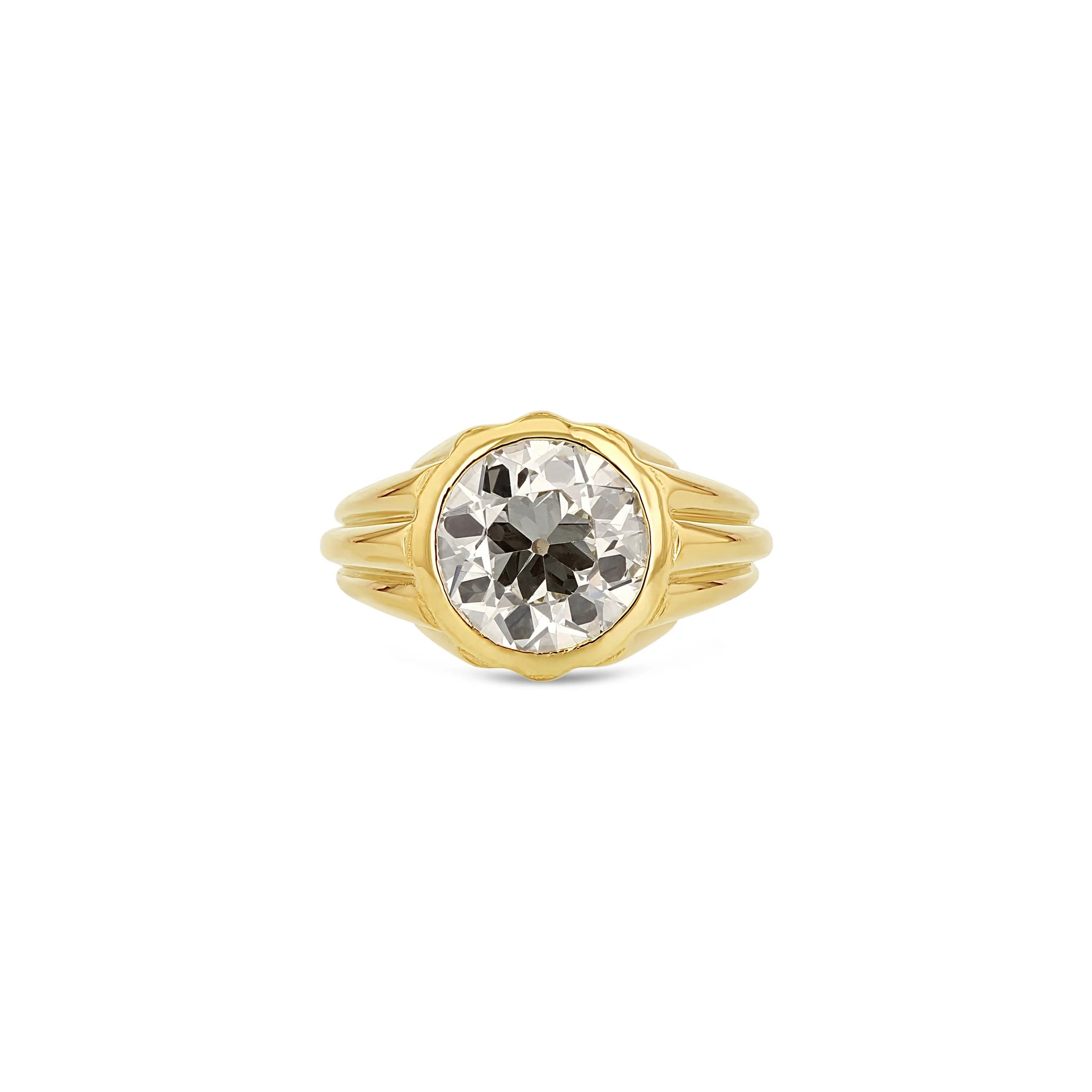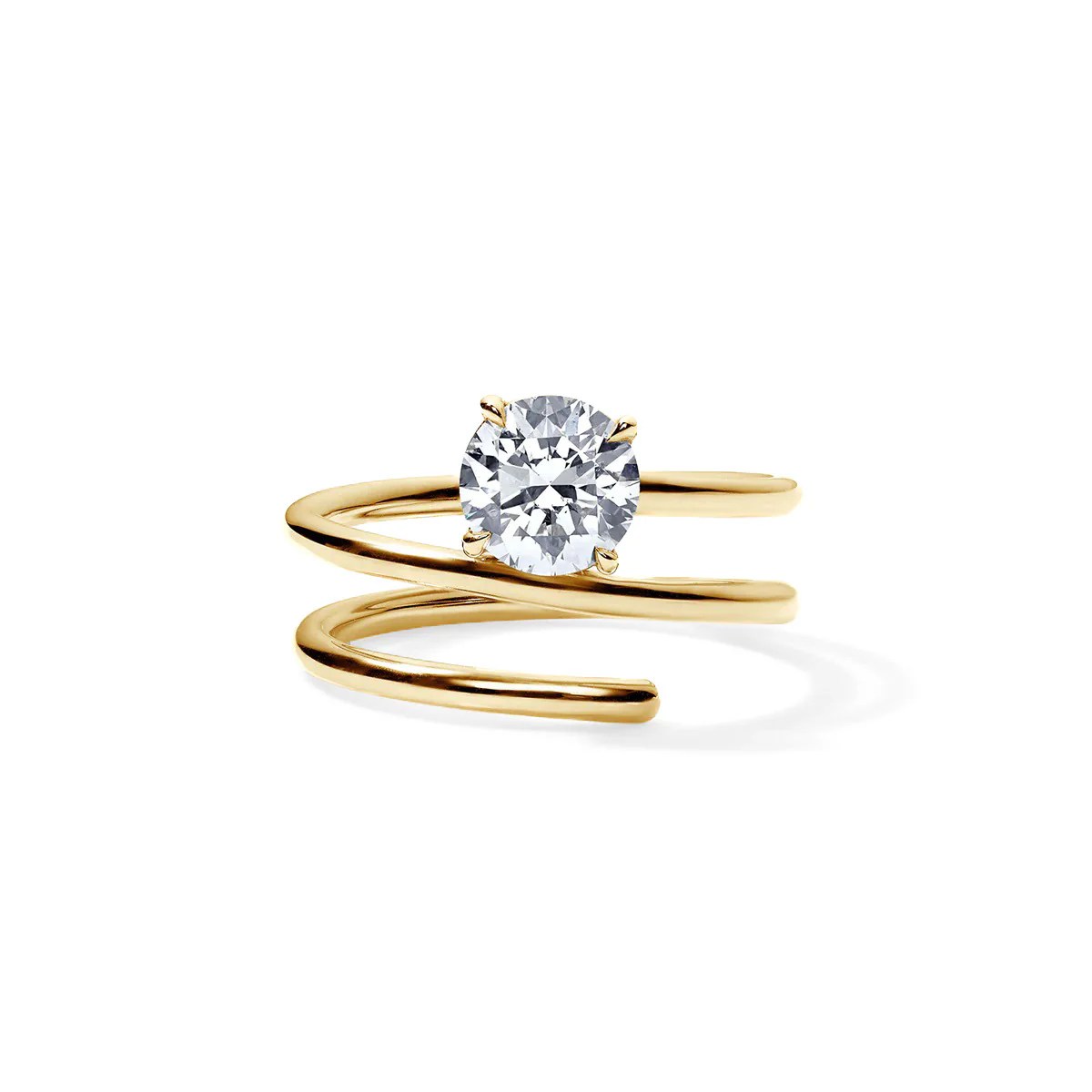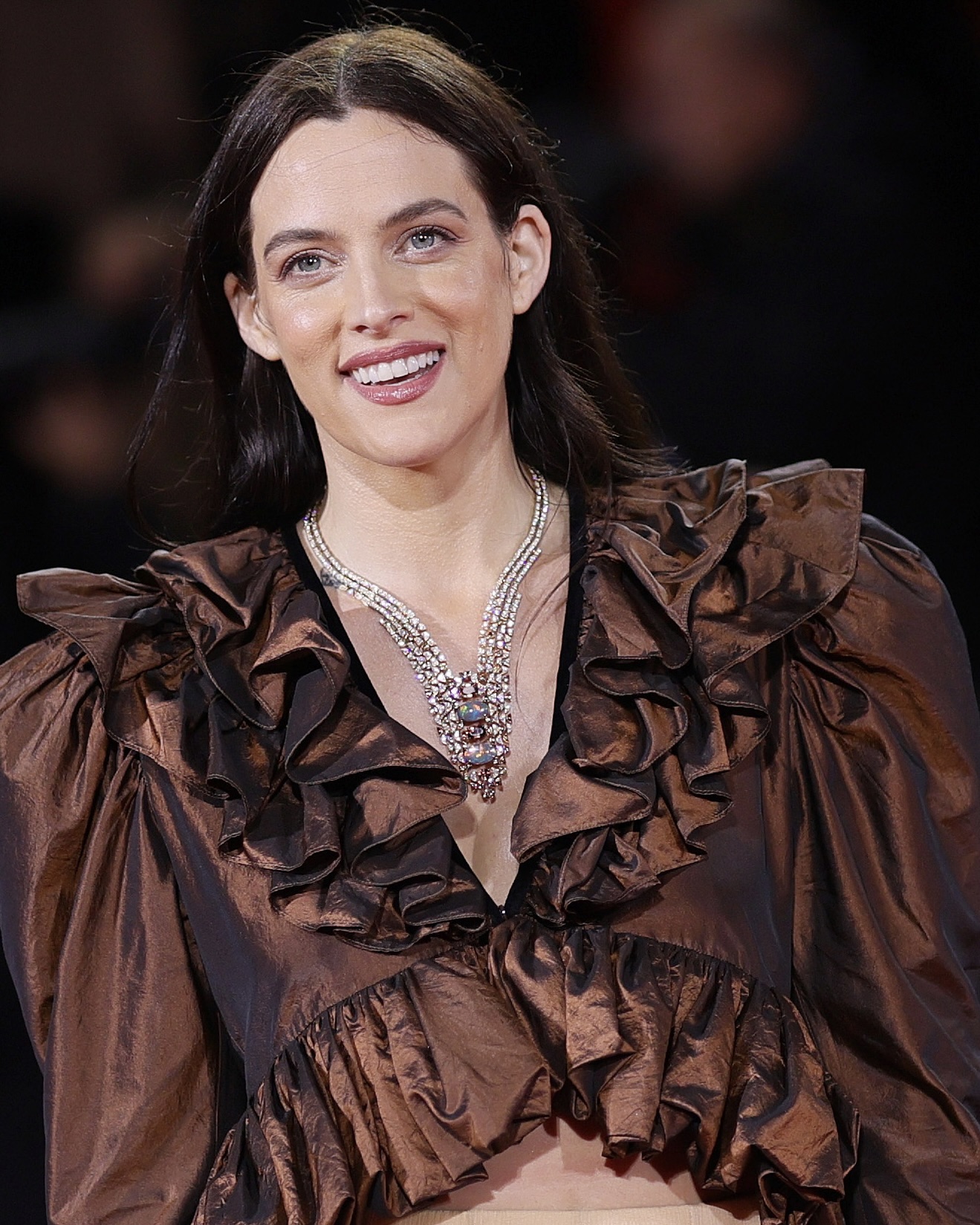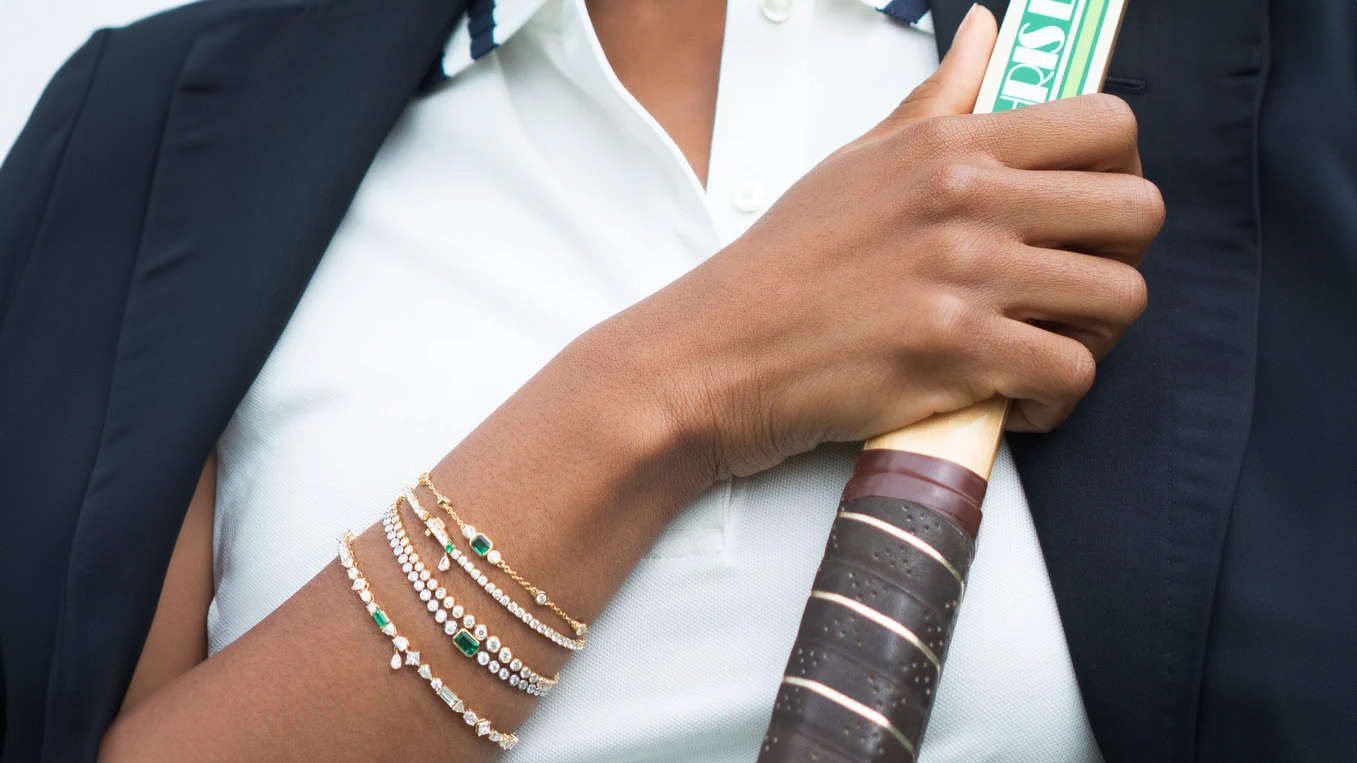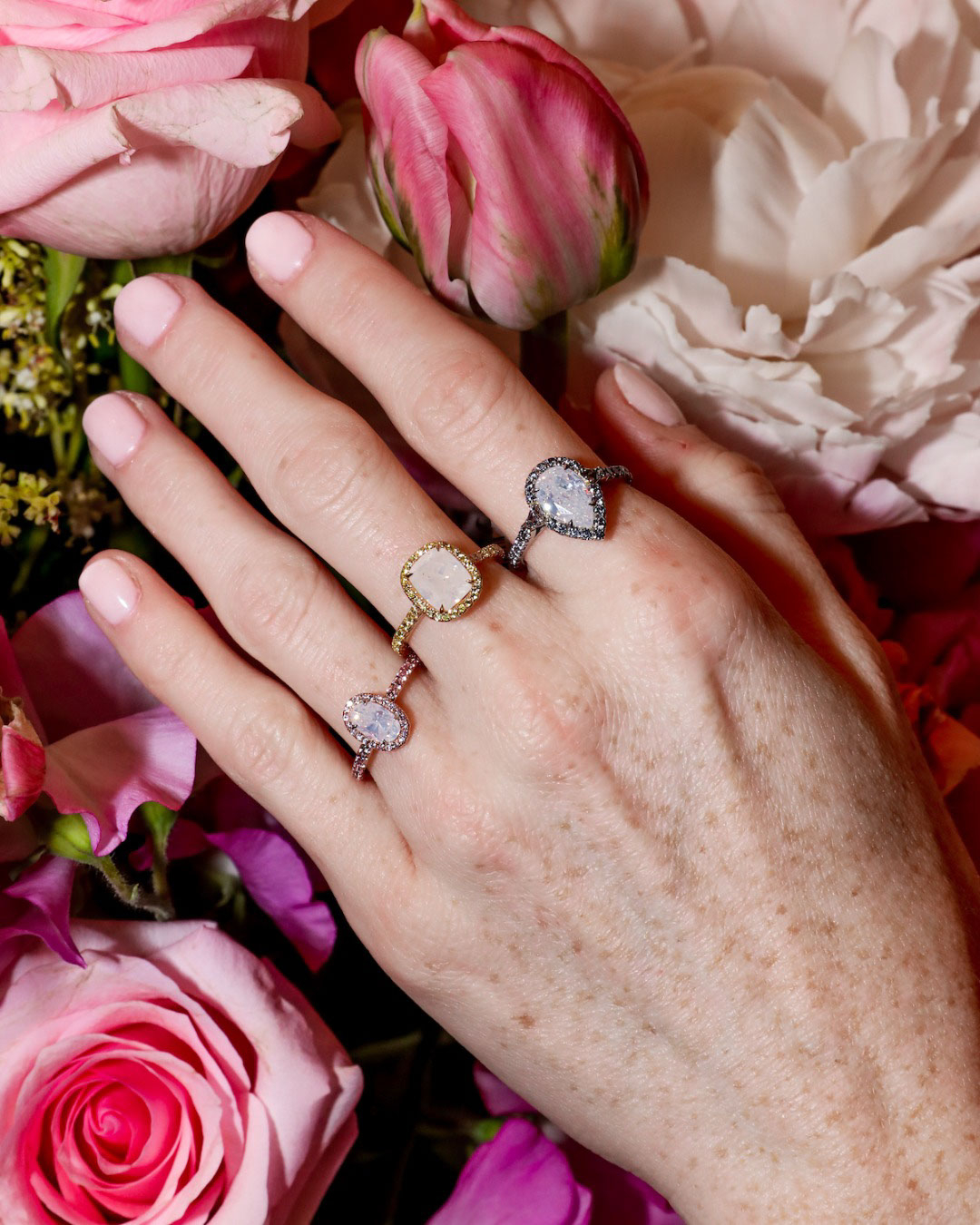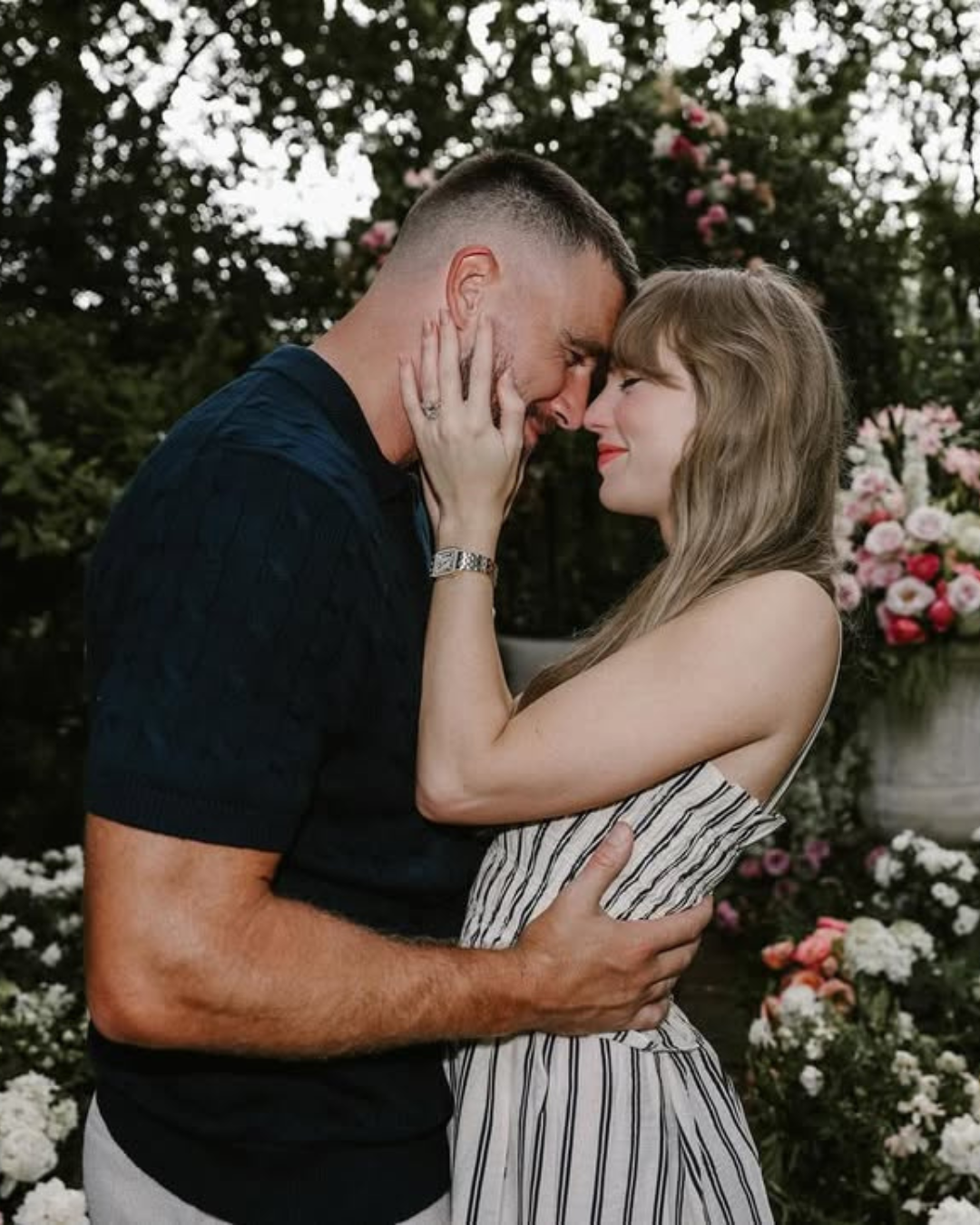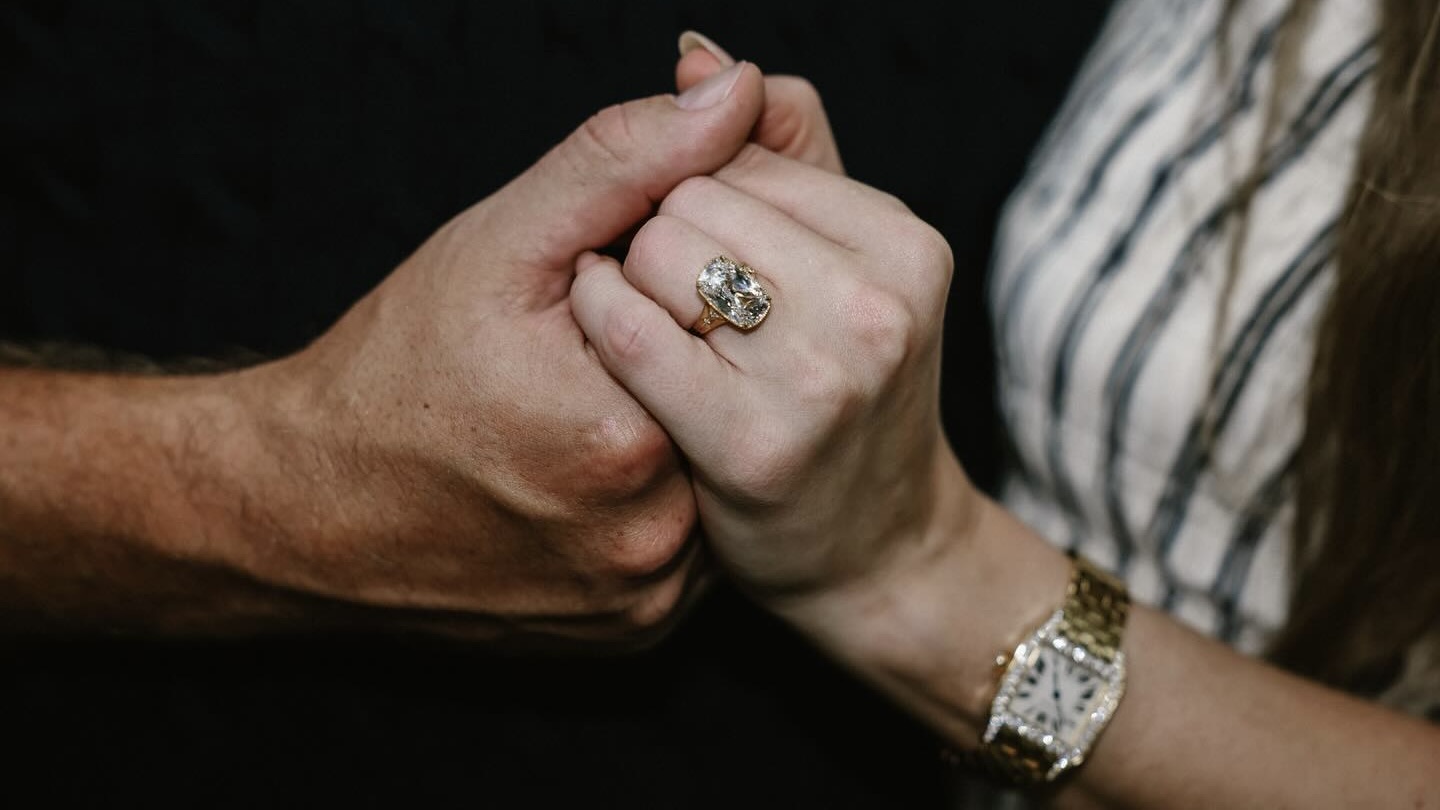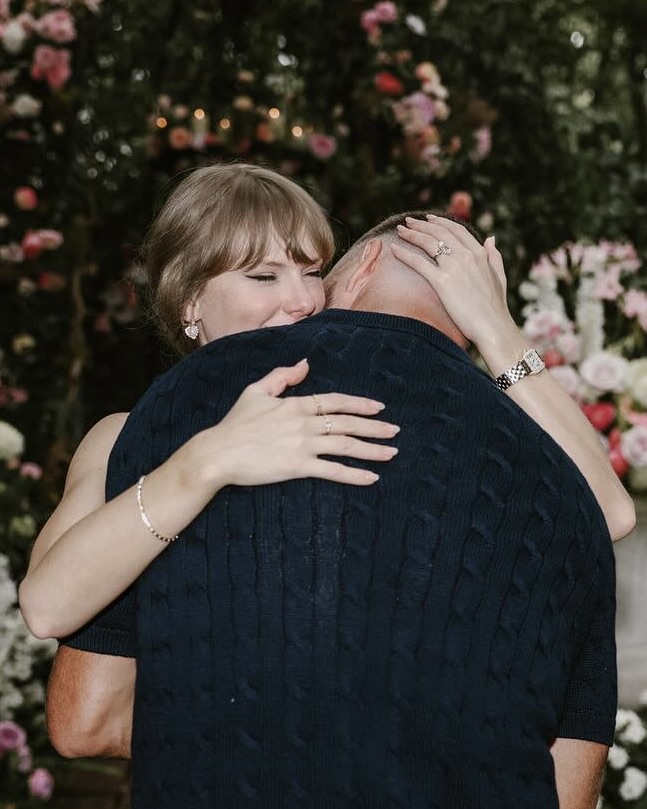Engagement Rings & Weddings / Engagement Ring Styles
The Solitaire Ring Setting Simply Never Goes Out of Style
Beloved for its timeless elegance and diamond-first approach, the solitaire ring has stolen hearts for over a century. Classic? Yes. Boring? Never.
August 8, 2025
Written by: Shelley Brown
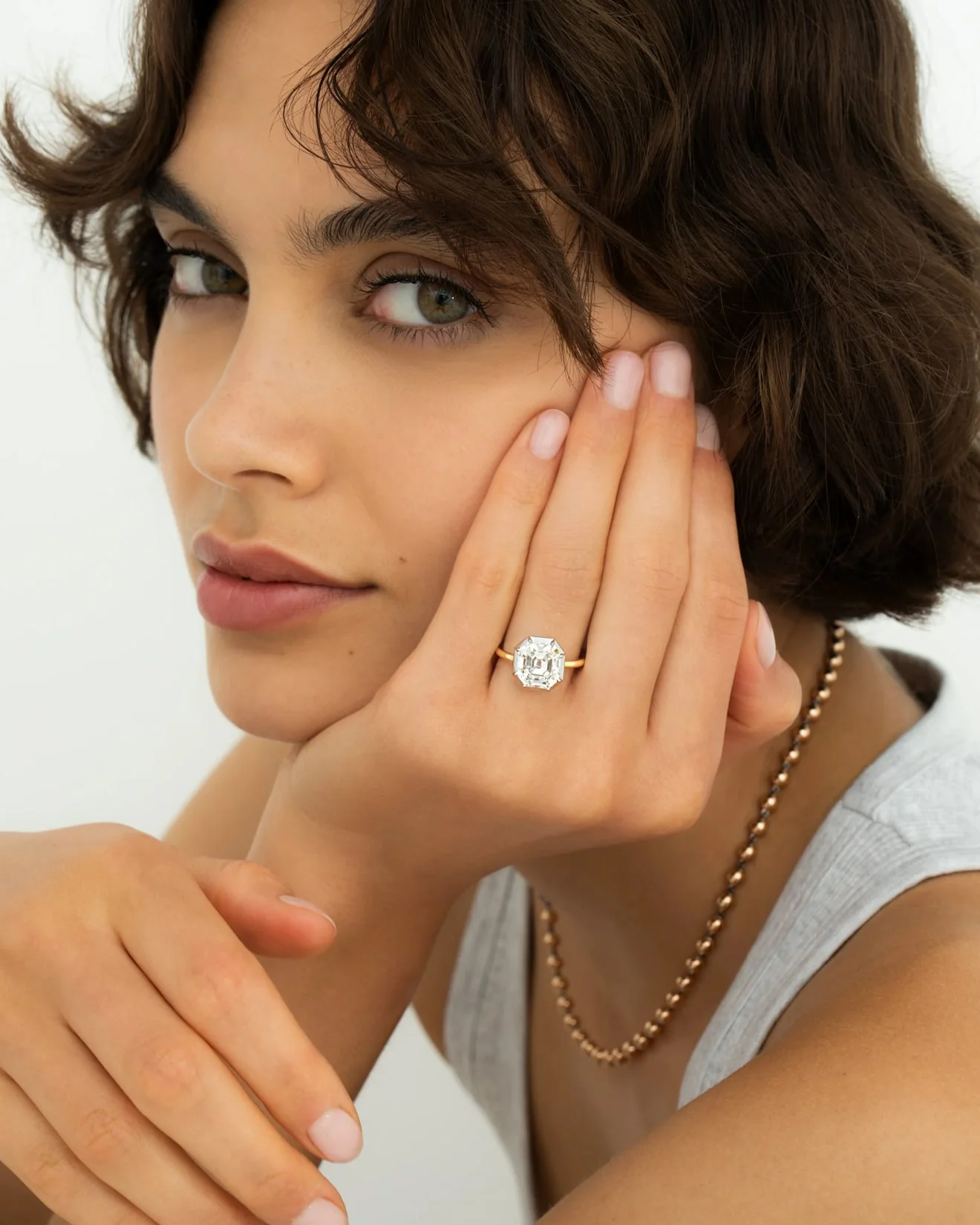
There are more than a few reasons why the solitaire ring has earned its status as the most popular engagement ring setting of all time. This pared-down style puts the spotlight on a single, dazzling natural diamond and its clean design complements virtually every personal style, whether minimalist, maximalist, or somewhere in between.
Although the solitaire ring may seem modern in its simplicity, it’s actually a time-honored classic, dating back more than a century (and yes, Tiffany & Co. played a significant role in its evolution). While other settings like double halos, floral motifs, and intricate side stones come in and out of fashion, the solitaire reigns supreme.
Meet the Expert
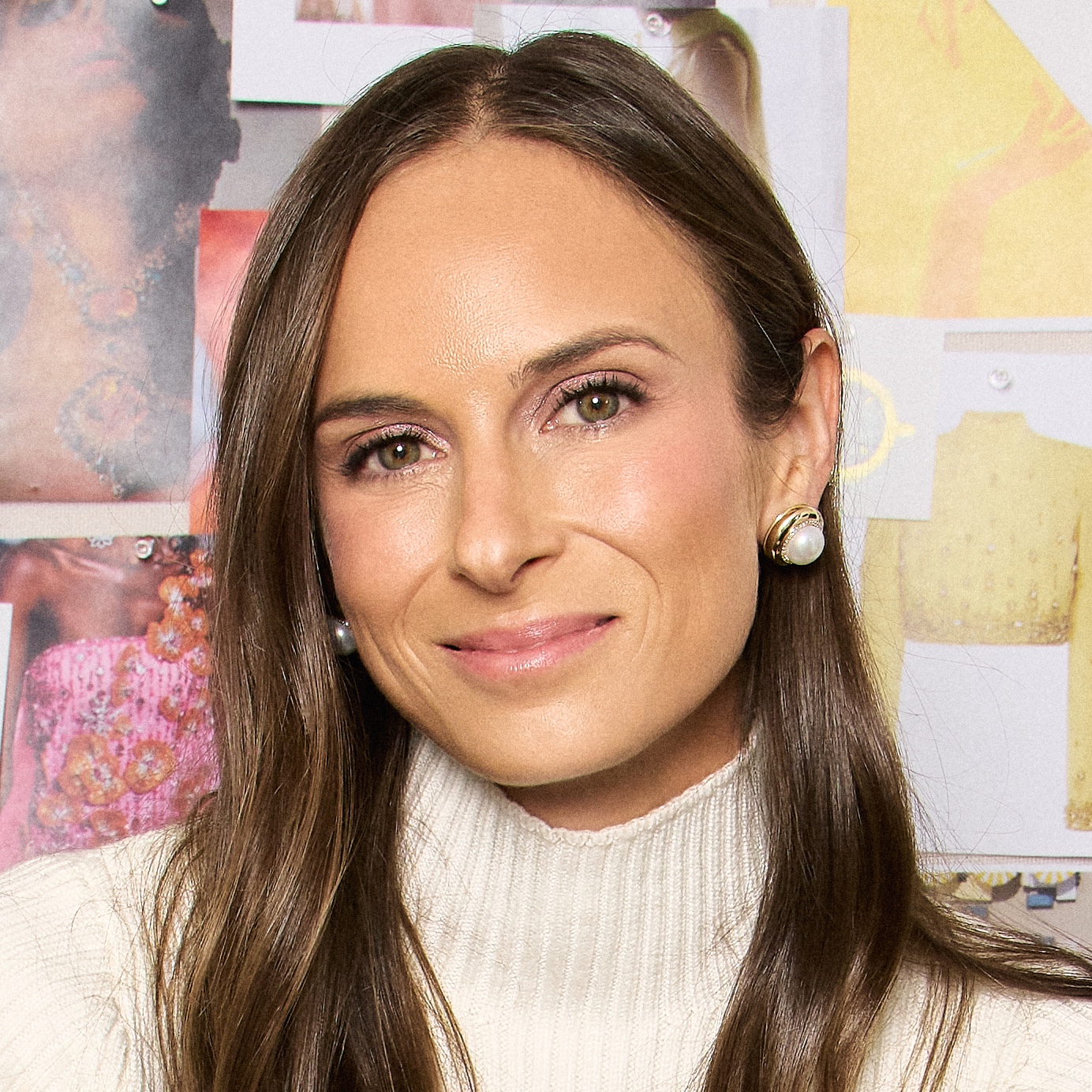
- Stephanie Gottlieb is a GIA-certified gemologist and the founder of her namesake NYC-based jewelry brand, launched in 2013.
- Known for her fashion-forward yet timeless designs, she creates fine and bespoke jewelry using ethically sourced materials.
- With over a decade of industry experience, Stephanie has earned a loyal global following and has designed custom pieces for high-profile clients, including Taylor Swift and Justin Theroux.
Below, we explore the legacy of the solitaire engagement ring, what sets it apart from trendier styles, and why it continues to be the most sought-after choice for couples. Plus, shop some of our favorite natural diamond solitaire rings to inspire your own love story.
What Is a Solitaire Ring Setting?
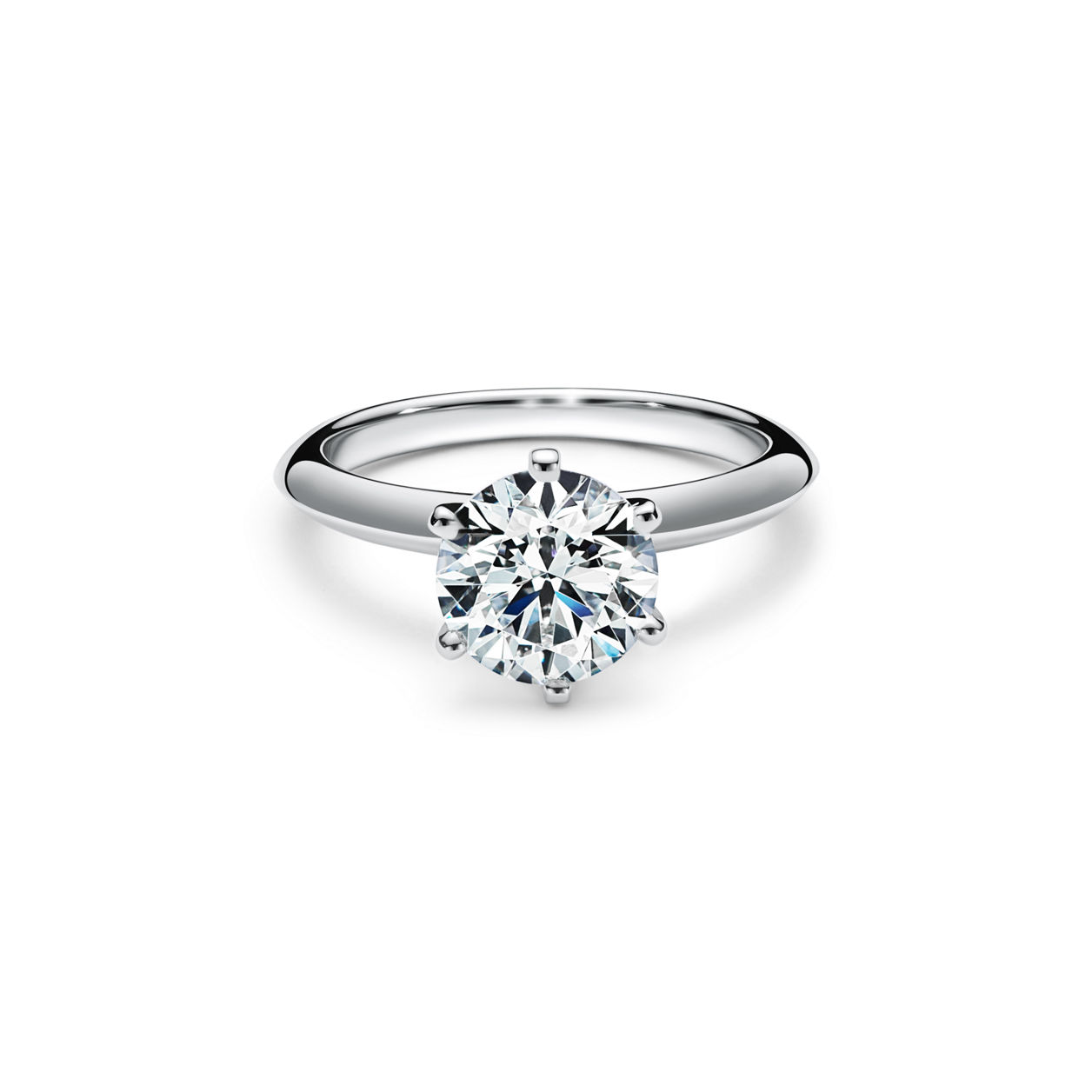
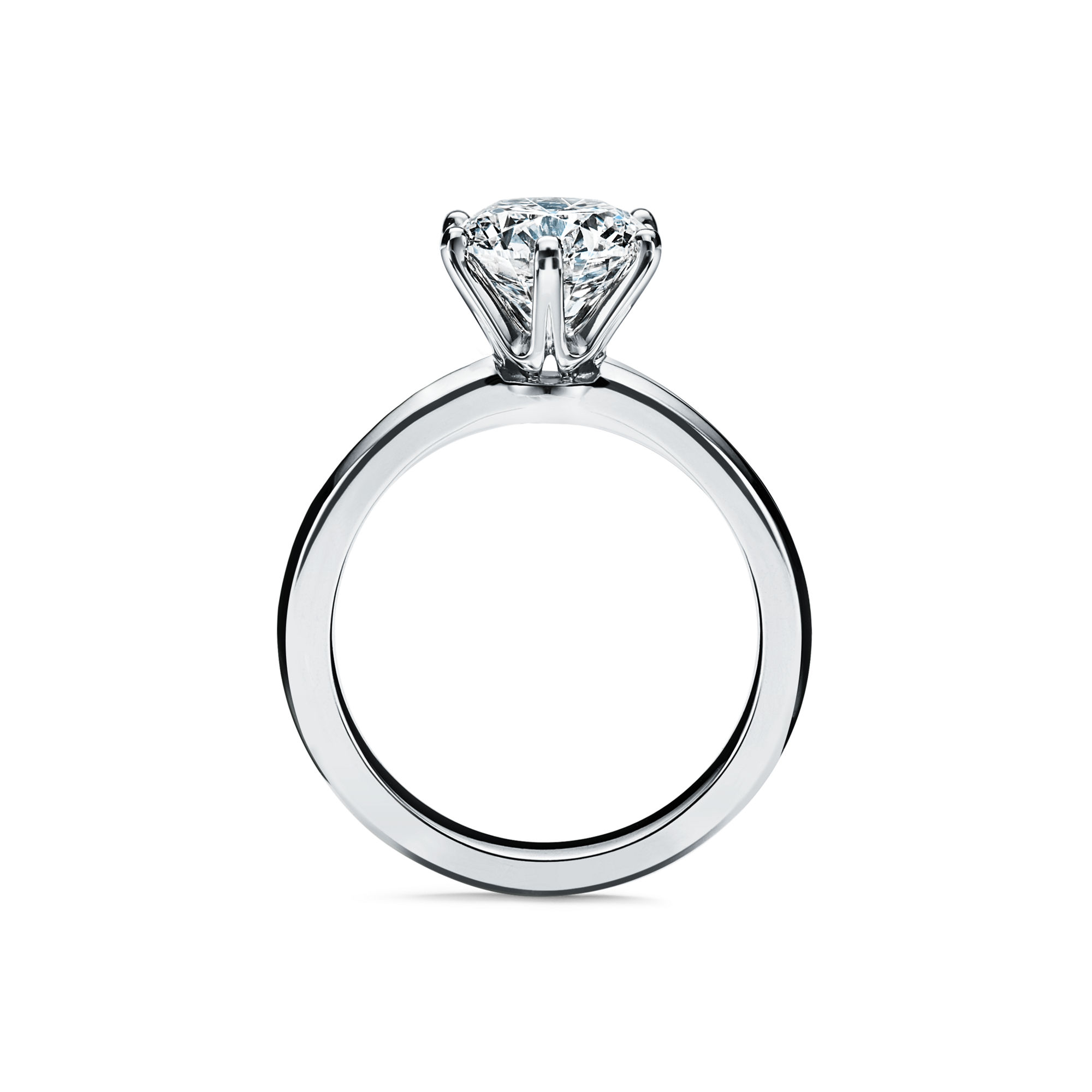
A solitaire ring setting features a single center diamond mounted on a plain or minimally adorned band. The diamond takes center stage—no side stones or halos. The term “solitaire” comes from the Latin word “solitarius,” meaning “alone” or “solitary,” emphasizing the single, prominent stone. It’s all about showcasing the beauty and brilliance of one exceptional natural diamond.
Most solitaire settings are prong-set, which lifts the diamond above the band to maximize light entry (read: sparkle). But solitaires can also be set in bezels, cathedral, or tension settings.
The History of the Solitaire Engagement Ring
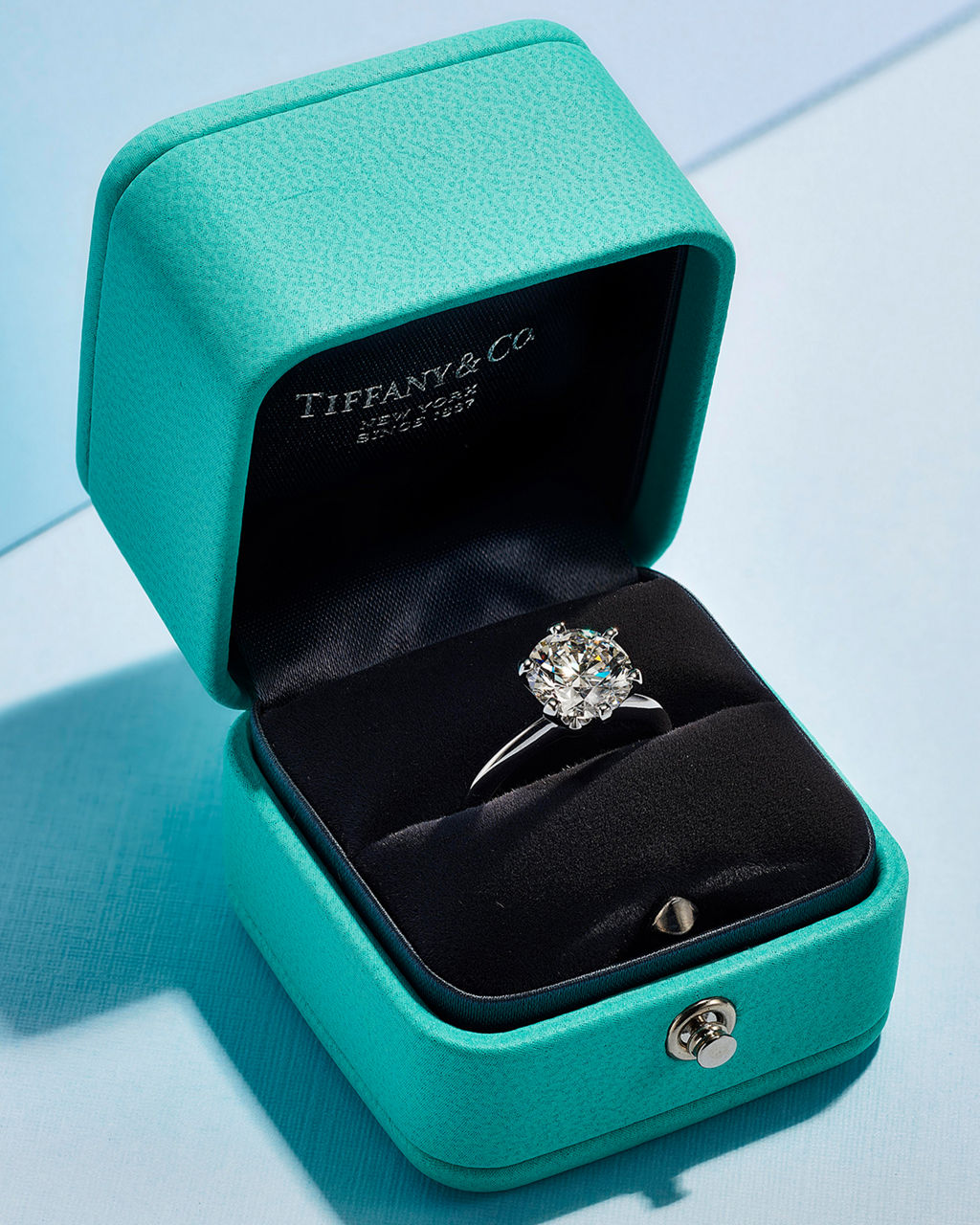
The solitaire ring as we know it today owes much of its enduring popularity to Tiffany & Co., which introduced the now-iconic Tiffany Setting in 1886. While prong settings existed in earlier centuries—most notably in Georgian and Victorian jewelry—they were typically low-profile and very ornate. Tiffany revolutionized the concept by creating a six-prong setting that elevated the diamond high above the band, allowing light to pass through the stone and maximizing its brilliance.
This clean, architectural design marked a sharp departure from the more decorative styles of the time, ushering in a new era of modern, diamond-centric engagement rings. The setting was even available through Tiffany’s “Blue Book” catalogue, making the dream of a diamond solitaire ring accessible to customers far beyond the brand’s New York flagship, long before the era of e-commerce made adding engagement rings to your cart second nature.
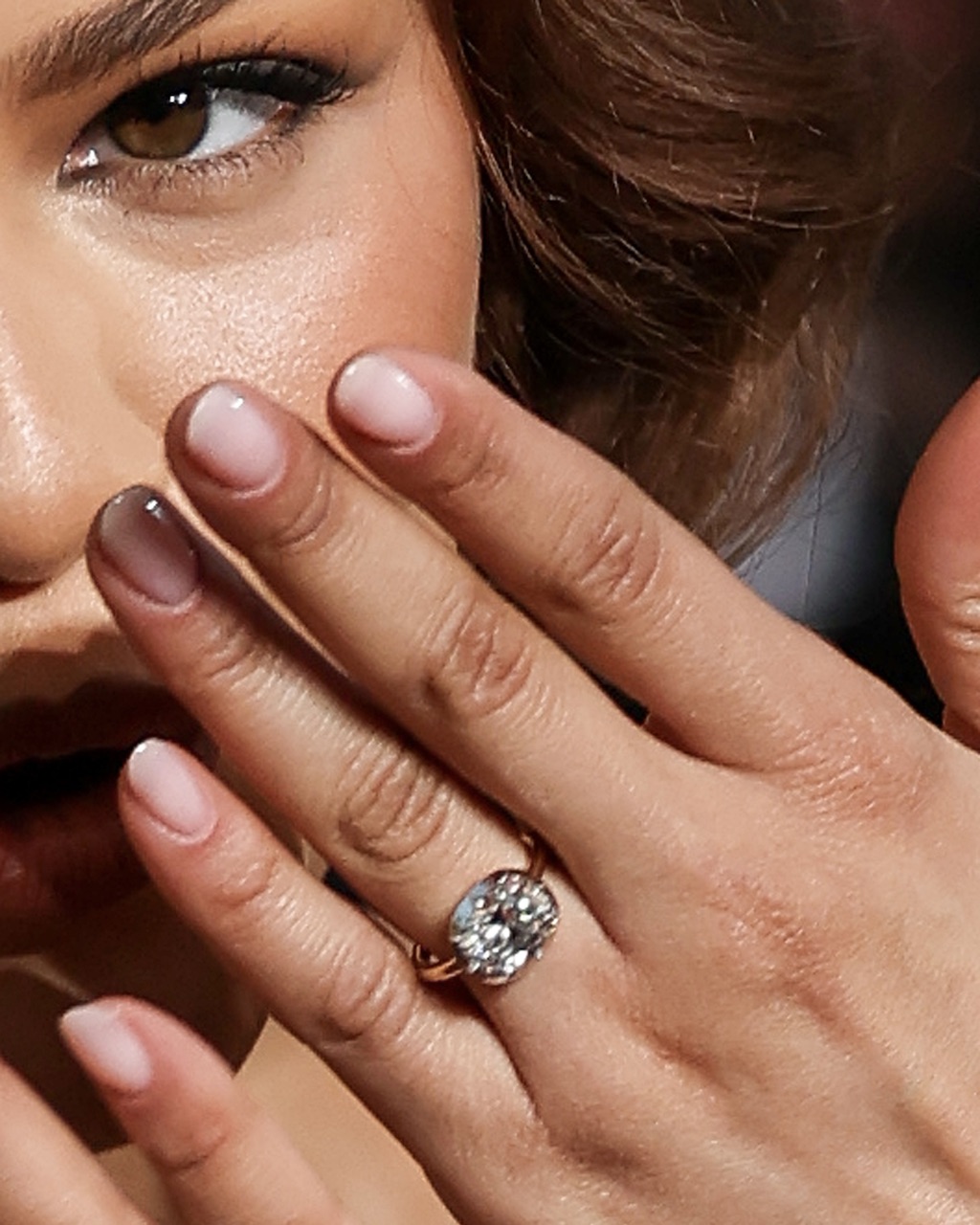
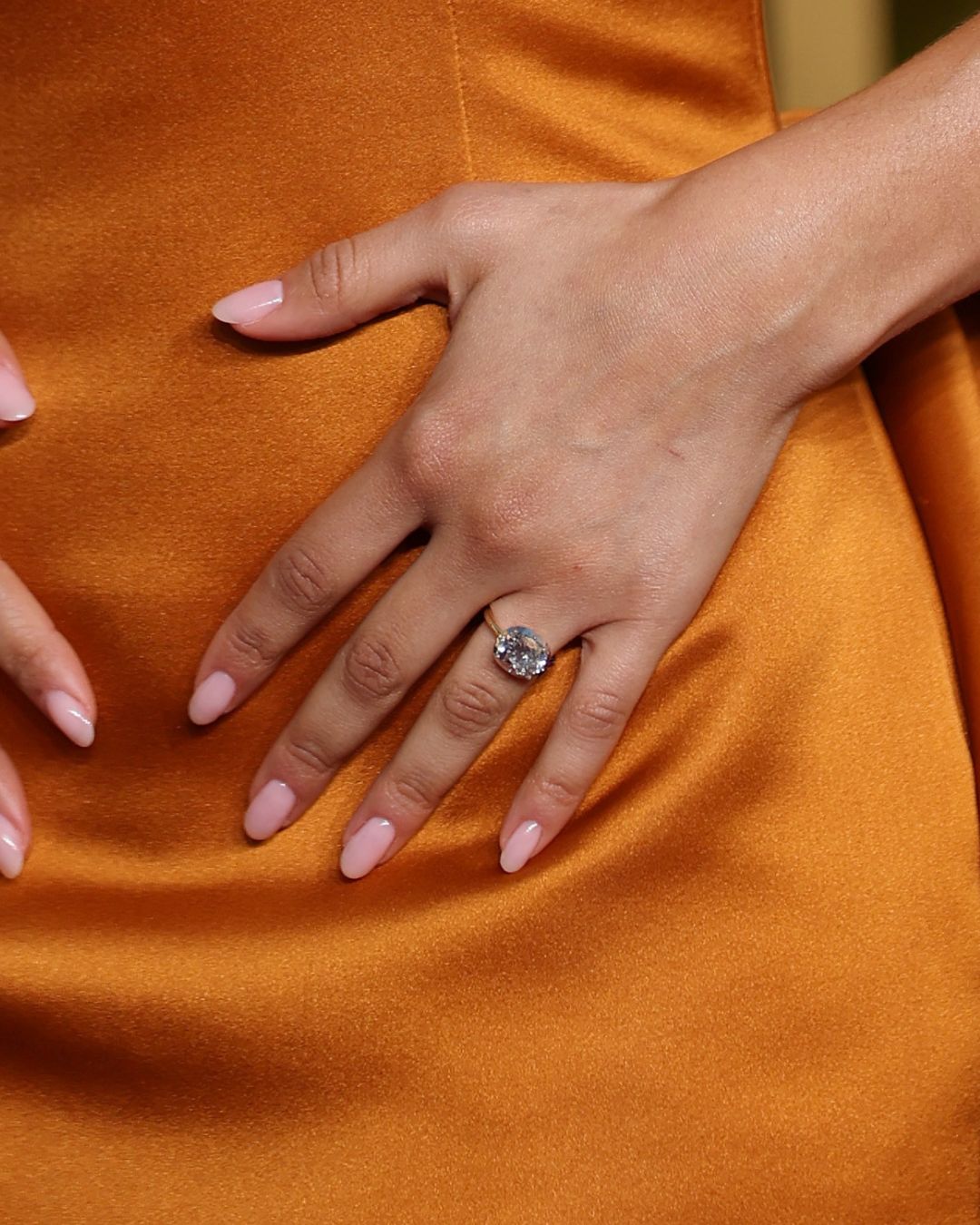
In the modern era, solitaires remain far and away the most popular engagement ring setting, beloved for their ability to highlight the beauty of a single, well-cut diamond. Contemporary designers like Jessica McCormack are reimagining the classic solitaire with refined, unexpected touches—most notably her signature button-back settings, a discreet, handcrafted detail that allows the ring to sit flush against the finger while nodding to antique craftsmanship. McCormack is rumored to be the designer behind Zendaya’s east-west cushion-cut solitaire engagement ring, set in her signature button-back style.
Stephanie Gottlieb takes a playful-yet-polished approach, designing timeless solitaire styles that often incorporate east-west settings, colored stones, and hidden halo details to add a layer of personalization. “There’s nothing competing for attention—just the stone, its cut, and its sparkle. That simplicity transcends trends,” says Stephanie Gottlieb, founder and creative director of Stephanie Gottlieb Fine Jewelry. “Whether it’s worn today or passed down in fifty years, a solitaire still feels elegant and current. It’s a setting that really lets the diamond tell its own story.”
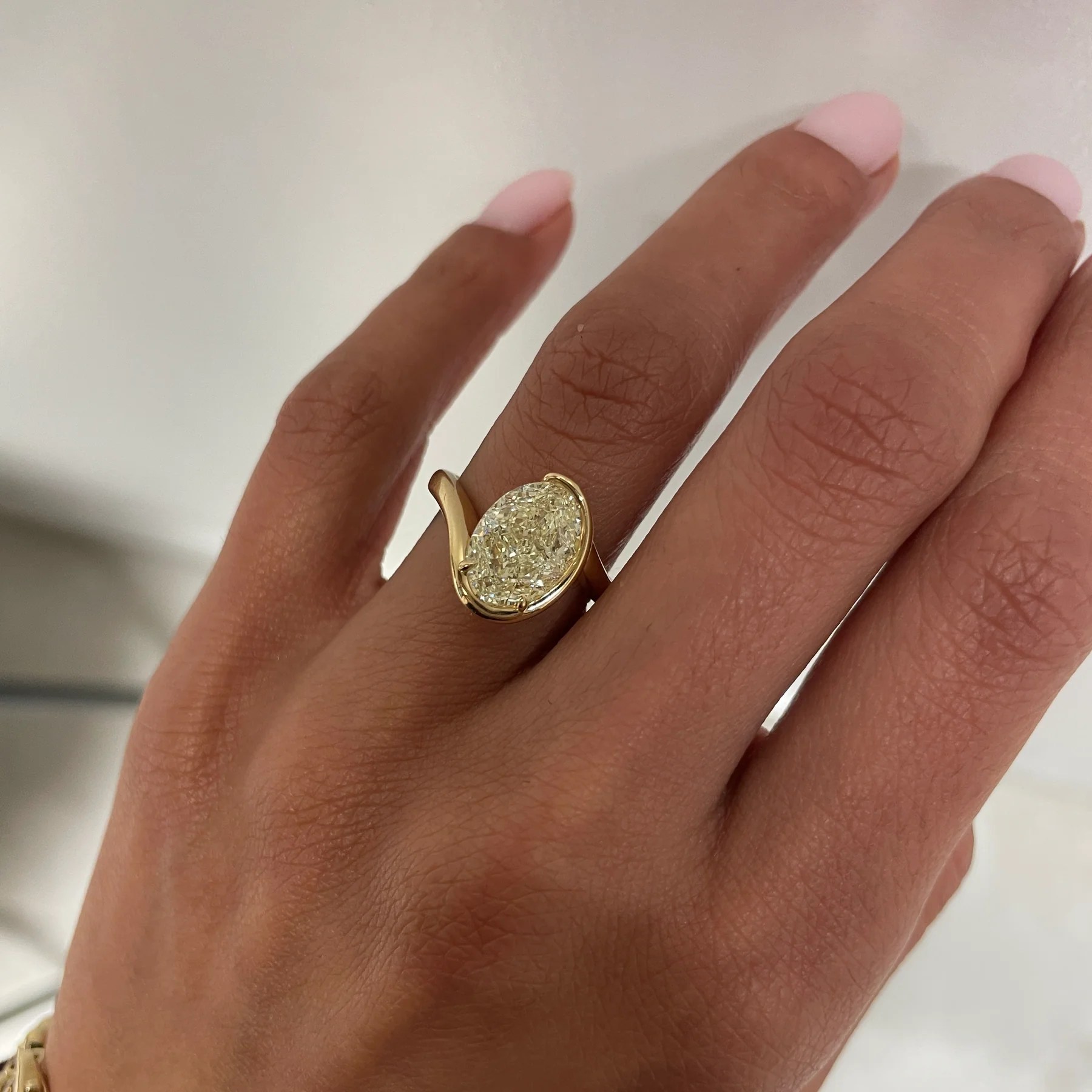
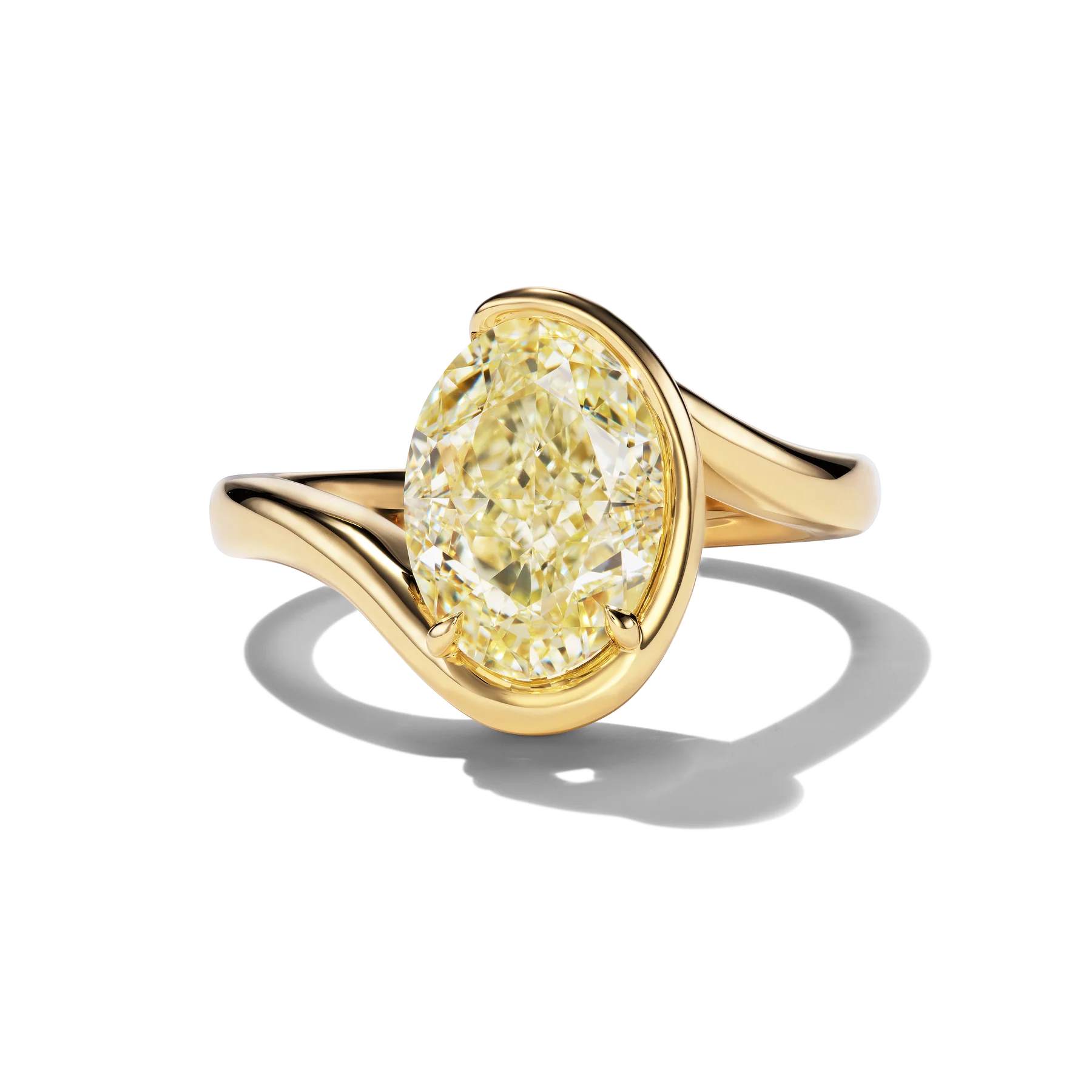
AARYAH brings a bold, architectural edge to the solitaire by experimenting with unique diamond shapes, asymmetry, and textured metals, often incorporating South Asian influences. Grace Lee offers sleek, ultra-minimal solitaires with distinctive proportions and negative space, making the center stone feel even more impactful. Meanwhile, KATKIM is known for avant-garde, sculptural designs that maintain the purity of a solitaire while pushing the boundaries of traditional form.
Pros and Cons of a Solitaire Ring
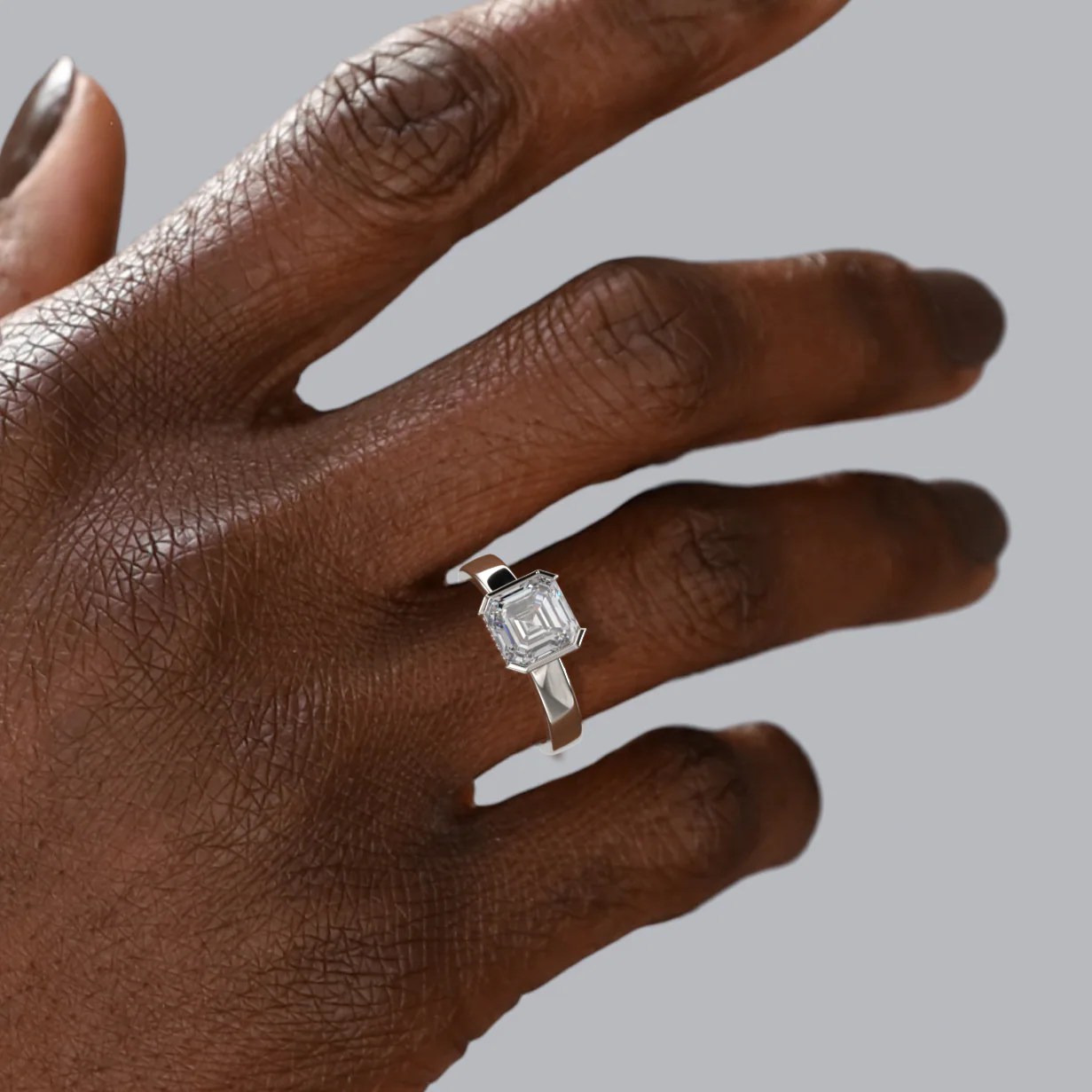
The versatility of the solitaire ring has made it a go-to for decades, as it blends timeless design with everyday practicality. But like any setting, it has both benefits and potential drawbacks depending on your personal style preferences.
Pros:
One of the greatest strengths of a solitaire setting is its enduring elegance. A solitaire ring features a clean, minimalist design that will never go out of style. It maximizes focus on the center diamond, allowing the stone’s brilliance and beauty to take center stage.
“The biggest pro is that the solitaire puts the diamond front and center,” says Gottlieb. “It’s the ultimate showcase for a beautiful stone, and it’s incredibly versatile for stacking with wedding bands or adding anniversary rings later. It also allows for a unique and playful wedding band.”
Thanks to its simple construction, a solitaire is also much easier to clean and maintain than more intricate designs. This makes it a practical and low-maintenance choice for everyday wear.
Cons:
That same minimalism, however, can be a double-edged sword. A solitaire setting puts the focus on the center diamond, meaning the 4Cs (cut, clarity, color, and carat weight) are especially important. Any imperfections will be more noticeable without surrounding stones or ornate details to distract the eye.
As Gottlieb notes, “The ‘con,’ if you can call it that, is that its simplicity means the quality of the diamond really matters.”
And while its minimalist style has broad appeal, it can feel too subtle for those who gravitate toward more ornate engagement rings. “A solitaire might feel too pared back unless we add those small personal touches to make it truly theirs,” Gottlieb says.
How to Personalize a Solitaire Ring
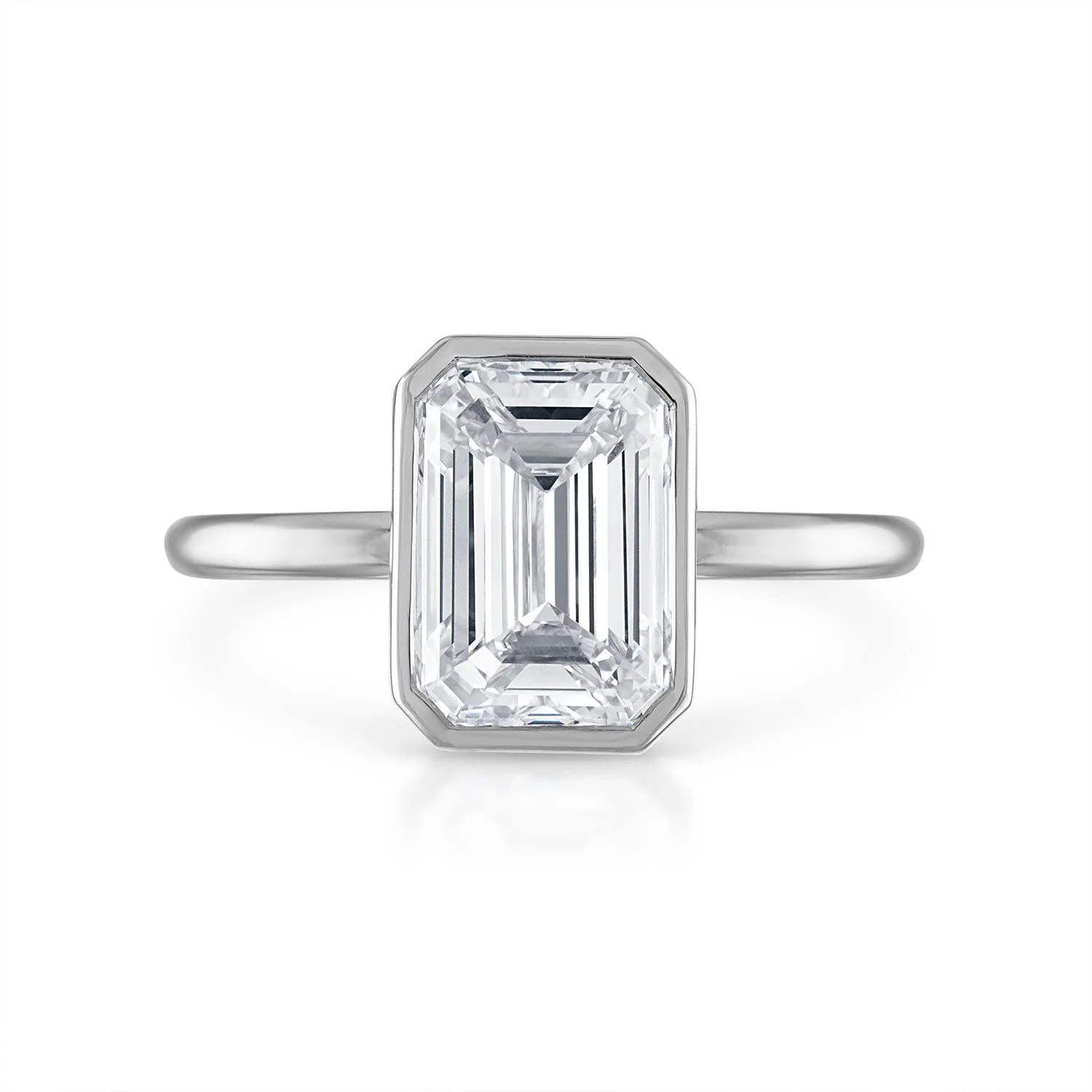
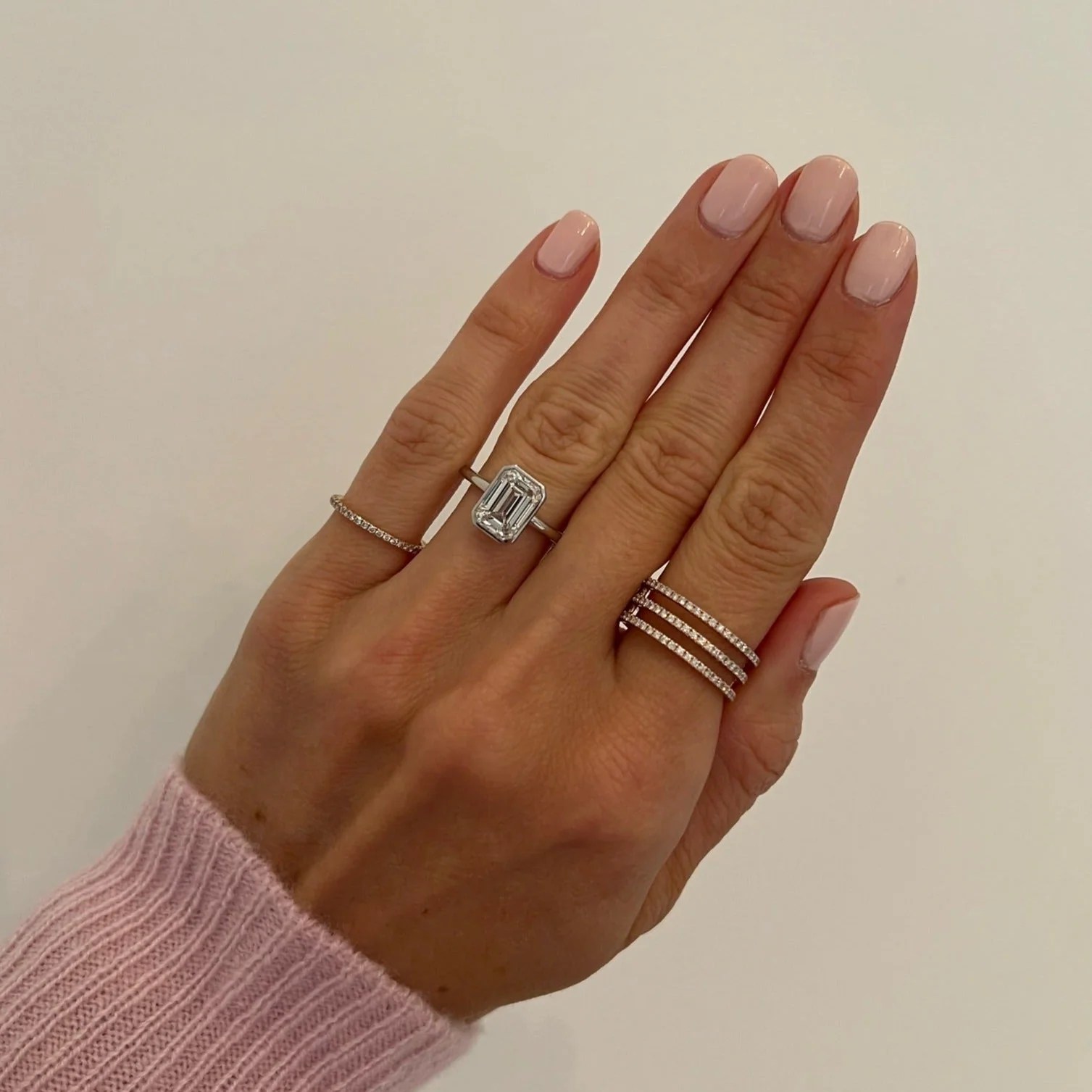
The beauty of a solitaire ring lies in its straightforward style, but that doesn’t mean it has to feel cookie-cutter. In fact, its clean silhouette offers the perfect canvas for personal touches that make it entirely your own.
From choosing an unconventional diamond shape to selecting a distinctive metal or band style, there are countless ways to infuse meaning into a classic solitaire.
“The beauty of a solitaire is in the details. I love setting an elongated stone east to west—it feels unique yet classic. We’ll also play with proportions—a very thin band to exaggerate the stone’s size, or a bolder band for a modern feel. Burnishing the couple’s birthstones inside the band is personal and very special,” Gottlieb says. “It’s about keeping the clean silhouette but infusing it with your personality.”
These small, thoughtful design choices can make a solitaire ring feel more individual without compromising its timeless appeal.
Shop Our Favorite Solitaire Rings
Ready to find your forever ring? Get inspired by natural diamond solitaire rings from some of our favorite designers.
